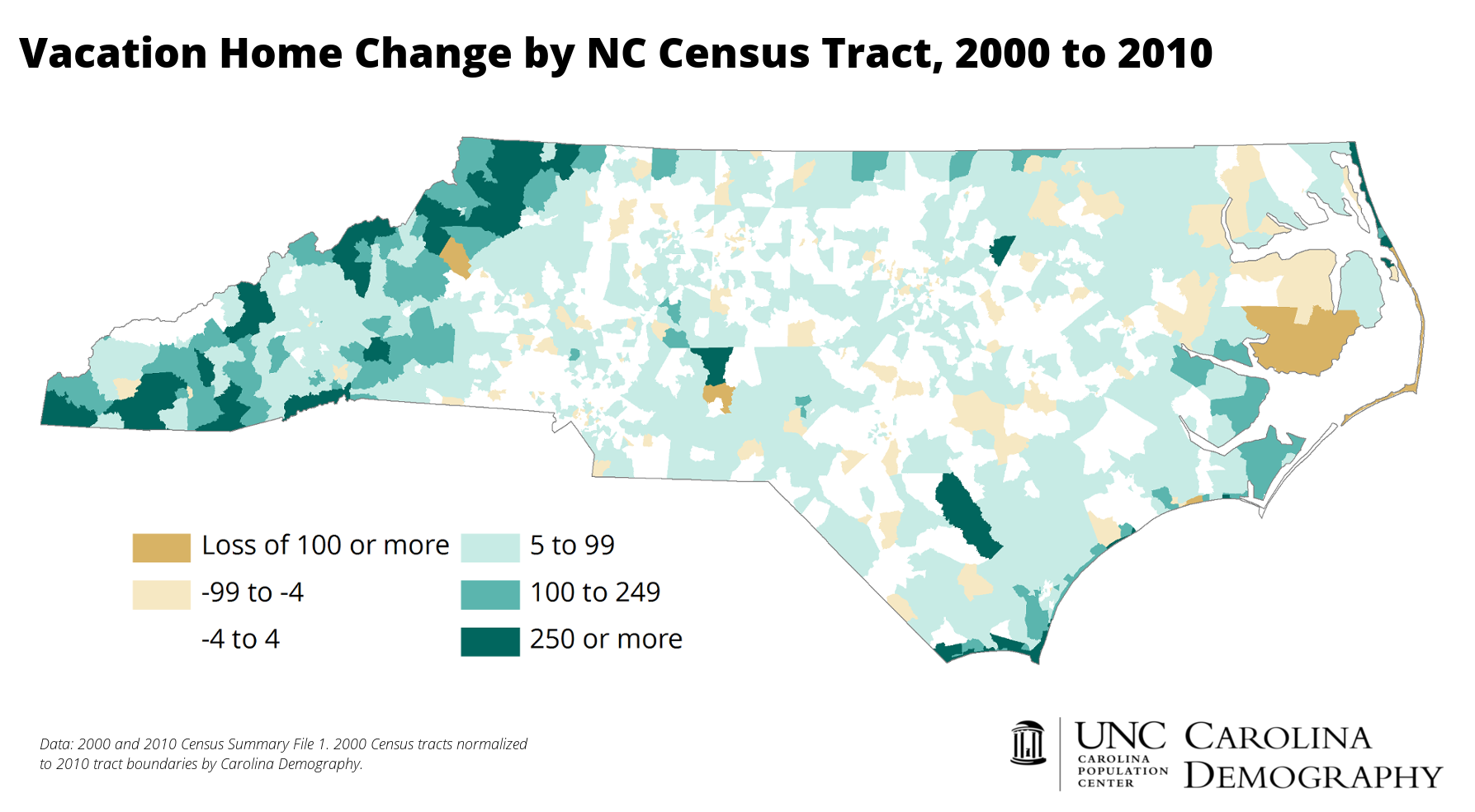NC in Focus: Vacation Homes
Memorial Day marks the beginning of summer rental season for many communities nationwide. In the decennial census, housing units that are classified as vacant for “seasonal, recreational, or occasional use” are typically referred to as “vacation” homes. The Census Bureau notes, “These may be large summer estates on Long Island, time-sharing condos in Fort Lauderdale, or simple fishing cabins in northern Michigan. Analysts often use this category to estimate the number of second homes in a given area.”
Since 1980, Florida has been the leader in the total number of these units. In 2010, North Carolina had 191,508 vacation homes and was 7th in total number, trailing #6 Wisconsin by about 1,500 units. These vacation homes represented 4.4% of the North Carolina’s housing units. Nationally, 3.5% of all housing units were vacation homes in 2010.
Between 2000 and 2010, North Carolina added nearly 57,000 vacation homes across the state, an increase of 42% over the decade. Where did vacation homes increase? Significant increases occurred in the western portions of the state and along the coast (although these are more difficult to see, due to the smaller land area of the census tracts). Vacation homes in Brunswick County increased the most over the decade, growing by just over 8,400. To the west, Watauga County gained the second largest amount (3,895) and Haywood the third largest (3,191).
Though losses of vacation homes were less common than gains, they were more likely to occur in the eastern portion of the state. Losses were of much smaller magnitude than gains: Hyde County experienced the greatest losses (a decline of 144) while Perquimans and Tyrell counties each lost 50 vacation homes between 2000 and 2010.
Read more:
Your support is critical to our mission of measuring, understanding, and predicting population change and its impact. Donate to Carolina Demography today.